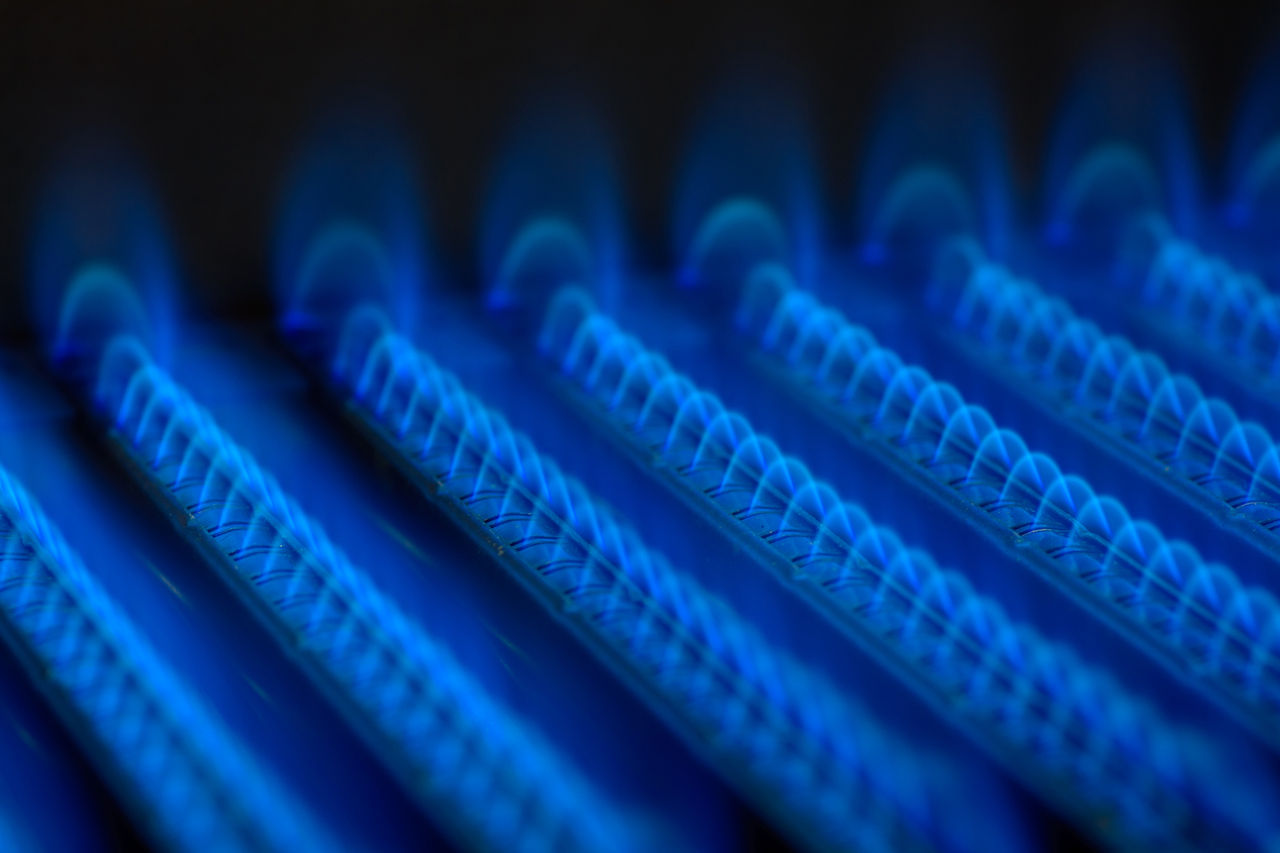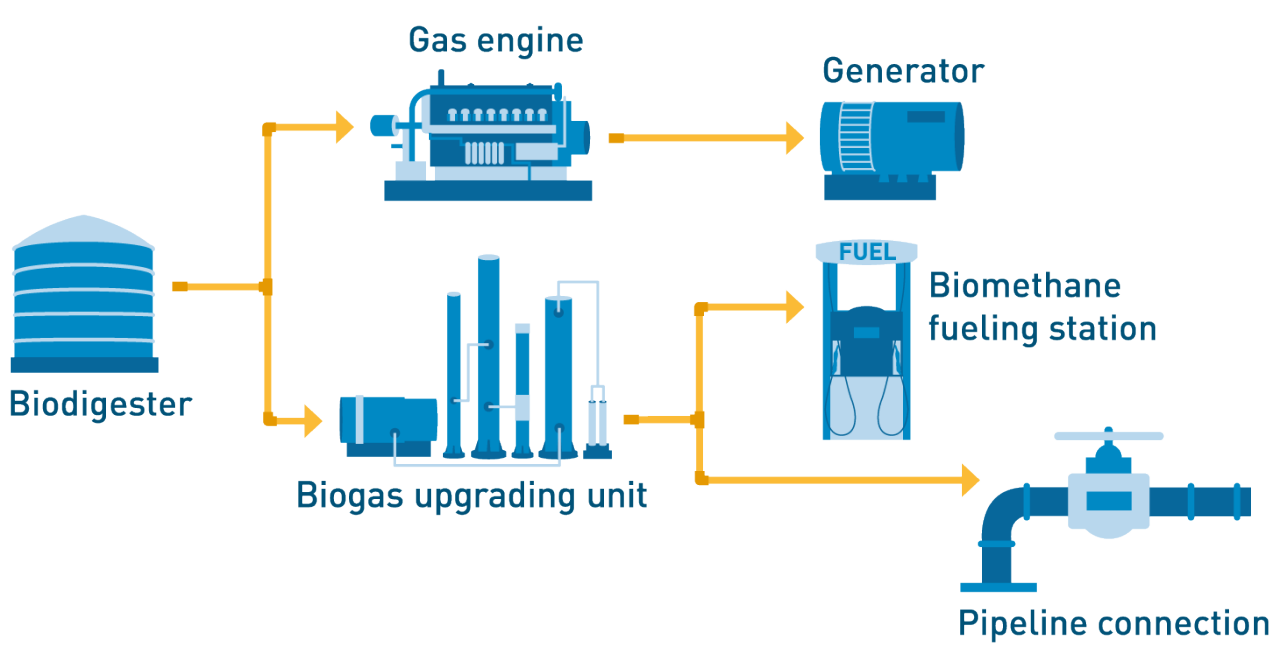Error: Field cannot be left blank.
Error: Invalid entry. Do not use equal signs [=] or colons [:].
Error: Field cannot be left blank.
Error: Invalid entry. Do not use equal signs [=] or colons [:].
PG&E is Committed to Renewable Biomethane
Biomethane is a 100% renewable energy source that is produced from organic matter like agricultural crops, forestry waste, wooden construction waste, and manure. Major sources of biomethane are non-hazardous landfills, dairies, wastewater treatment plants and other organic sources.
Contact Us with Issues
Report any accessibility barriers you encounter when using our site by contacting CGTPipeRanger@pge.com. The mailbox is monitored during our business hours (M-F; 6am-3pm PT). We will respond within 3 business days.
What is Biomethane?
Biomethane is a 100% renewable energy source which is produced from organic matter like agricultural crops, forestry waste, wooden construction waste, and manure. Major sources of biomethane are non-hazardous landfills, dairies, wastewater treatment plants and other organic sources.

Reduces greenhouse gases
Methane that would have escaped into the atmosphere is captured, then used in place of greenhouse-gas-emitting fuels.
24/7 green energy source
Other clean energy sources depend on fluctuating factors like sunshine and wind. Renewable natural gas can be used at any time.
Promotes the development of clean-sourced energy
Developing a renewable energy source that can take over many of the roles of traditional fossil fuels.
Helps meet the California Renewables Portfolio Standard
The ambitious goal is to reduce greenhouse gas emissions by 40% below 1990 levels by 2030, and 80% below 1990 levels by 2050.
Biomethane can be used in a variety of different ways. That’s one of the reasons it makes sense for Californians to work together to bring this renewable energy source online.
Part of the natural gas supply
Biomethane is interchangeable with natural gas and can enter the natural gas pipeline system where it will be used to create heat in homes, offices and factories across California.
Fueling vehicles
Biomethane can be used in compressed natural gas or liquefied natural gas vehicles. Biomethane used in near-zero emission, heavy-duty trucks can deliver some of the best greenhouse gas emission reductions for our state.
Creating electricity
Biomethane can be used to create electricity through reciprocating engines, turbines or fuel cells. This makes it a very clean source of energy for our state.
If you’re interested in learning more about the program, contact us at biomethane@pge.com.
Interconnecting with PG&E
1. Interconnection screening study
First, provide some information about your project, including your supply source, location and volume. After our analysis, we’ll let you know about the nearest pipeline location that can accept your supply.
Allow: Up to 15 business days
Cost: No cost
2. Preliminary engineering study
We’ll send a project team with engineers and project planners to your site. The team will review the most efficient and safest route to make the pipeline connection, and then develop a preliminary cost estimate for the interconnection.
Allow: Up to 90 business days
Cost: $50K
3. Detailed engineering study and construction
This is the engineering and construction phase. We’ll finalize the project design and provide more detailed estimates. Then construction will begin.
Allow: Up to 180 business days for DES
Cost: $2-$5M*
*Project costs will vary depending on project scope, the season in which construction occurs, and on details associated with the project location (e.g., environmentally sensitive areas, railroad or major road or highway crossings, etc.).
Location of your biomethane plant
Long distances can increase costs and permitting requirements.
How much pipeline capacity is available nearby
We need sufficient room in the pipeline to receive the biomethane you may be producing.
Pipeline pressure at the site of the injection
The gas you’re supplying will need to be at least equal to the pressure of the pipeline. Injecting biomethane must be done safely and within acceptable pressure ranges.
Customer demand for gas near your connection
There must be adequate and stable gas demand on the pipeline to accept the biomethane supply from your plant.
Frequently asked Questions
Get answers about interconnecting biomethane.
Biomethane is like natural gas except it comes from renewable sources. Major sources include non-hazardous landfills, dairies and wastewater treatment plants. When organic waste from those sources decomposes without oxygen, it creates what is called "biogas." The biogas can be processed into biomethane and made safe for injection into pipeline systems or to generate electricity.
When raw methane from organic sources is emitted into the atmosphere instead of being converted to biomethane, it’s a major source of greenhouse gases. Capturing it as biomethane and injecting it into pipelines can reduce greenhouse gases and help California meet its environmental goals.
The State of California provides financial reimbursements to offset biomethane developer pipeline interconnection costs. Under Assembly Bill 2313, these reimbursements can be up to 50% of the interconnection costs or $3 million per project, whichever is lower. If a project involves a cluster of dairy farms, the reimbursements can be up to 50% of the interconnections costs or $5 million, whichever is lower. Reimbursements for biomethane interconnection costs are implemented by the California Public Utilities Commission (CPUC) decisions and policies and carried out by regulated investor owned gas utilities like PG&E. In December 2020, the CPUC approved adding an additional $40 million of Cap-and-Trade allowance proceeds to the biomethane monetary incentive program.
PG&E works with biomethane project developers to examine the following four factors:
Location - Long distances can increase costs and permitting requirements.
Capacity - Need sufficient room (capacity) in the pipeline to receive the biomethane.
Pressure - PG&E must ensure injecting biomethane is done safely and within acceptable pressure ranges at the point of injection.
Gas demand - Customer gas demands on the pipeline must be adequate and stable to accept the continuous supply of injected biomethane from the proposed project.
Project costs will vary depending on project scope, the season in which construction occurs and on details associated with the project location (e.g., environmentally sensitive areas, railroad or major road or highway crossings, etc.).
| Phase | Estimated cost | Estimated time |
|---|---|---|
Interconnection screening study
|
No cost
|
Up to 15 business days
|
Preliminary engineering study
|
$50k
|
Up to 90 business days
|
Detailed engineering study and construction
|
$2 – $5m
|
Up to 15 business days
|
For the Interconnection Screening Study, PG&E will provide:
- Location of the nearest gas pipe system that can accommodate the supply volume without restriction
- Maximum Allowable Operating Pressure (MAOP) and Normal Operating Pressure (NOP) of that gas pipe system
- Estimated length of pipe needed to interconnect a producer’s biomethane supply
- The takeaway capacity of the pipe system closest to the upgrading facilities
For the Preliminary Engineering Study, PG&E will provide:
- Confirmation that the identified pipe can receive the proposed supply 24X7
- An AACE Class 5 estimate for point of receipt and pipeline interconnection facilities**
- Route, Land, Permitting Assessment including a route walk with the developer
** American Association of Cost Estimators Class 5 estimate is based on an accuracy range of +100%/-50%.
For the Detailed Engineering Study and Construction, PG&E will provide:
- Project schedule and cost estimate updates at 30%/60%/90% design phases
- Interconnection contract at completion of design based on final cost estimate
Because the heating value varies across the PG&E system, PG&E does not specify a heating value number. Per PG&E’s Gas Rule 21, “the gas shall have a heating value that is consistent with the standards established by PG&E for each Receipt Point.” For each project request, PG&E will review the provided heating value content of the new gas supply and the estimated delivery volumes in order to determine if the gas supply can be safely received into the pipeline at the project receipt point. Blending studies may be performed by request but at actual costs to the Interconnector.
PG&E’s gas quality requirements are specified in its tariff Gas Rules 21 & 29. The California Public Utilities Commission (CPUC) approved gas quality standards for renewable natural gas (biomethane) in 2014 as recommended by the California Air Resources Board (CARB) and Office of Environmental Health Hazard Assessment (OEHHA) to protect human health and safety. These important gas quality standards were vetted in an extensive three-year long public process involving environmental, regulatory, developer and utility stakeholders.
Who can I contact at PG&E to discuss interconnecting my biomethane project? If you want to interconnect a biomethane project to our gas system, please complete the Request for Gas Supply Interconnection and send via e-mail to Biomethane@PGE.com.
R&D Renewable Natural Gas (RNG) Road Map
The Renewable Natural Gas (RNG) Value Chain document is a framework that takes a holistic view of the RNG process by highlighting the key segments from raw materials to end use in a simple visual medium. The document is meant to convey the entire RNG picture.
Encompassing the key segments covered in the RNG Value Chain, the RNG Roadmap lays out PG&E’s plan in the RNG and clean fuels space over the next 10-15 years. It also highlights the focus areas where PG&E sees opportunities, as well as initiatives for each focus area.
The PG&E Gas R&D and Innovation team has developed seven whitepapers covering the steps highlighted in the RNG Value Chain, including Biomass, Biochar, Conversion, Upgrading, RNG Demand, Alternative Carbon Markets and Hydrogen. Each whitepaper provides a general overview of these topics, as well as a description of the current state of technology.
Download the following:
Whitepaper: Alternative carbon markets 9/19/2018 (PDF)
Whitepaper: Biochar analysis 6/15/2018 (PDF)
Whitepaper: Biogas upgrading 10/19/2018 (PDF)
Whitepaper: Biomass 9/18/2018 (PDF)
Whitepaper: Conversion 8/30/2018 (PDF)
Whitepaper: Pipeline hydrogen 9/18/2018 (PDF)
Whitepaper: Renewable Natural Gas Demand 8/30/2018 (PDF)
The PG&E Gas R&D and Innovation team has developed thirteen Technical Analyses that take a deeper dive at covering individual technologies that are mentioned in the RNG whitepapers. Topics include anaerobic digestion, gasification, methanation, water scrubbing, fuel cells and more.
Download the following:
Anaerobic digestion technical analysis 5/15/2018 (PDF)
Captured carbon uses technical analysis 7/27/2018 (PDF)
Carbon capture technical analysis 7/27/2018 (PDF)
Cryogenic separation technical analysis 7/27/2018 (PDF)
Fuel cells technical analysis 8/2/2018 (PDF)
Gasification technical analysis 5/1/2018 (PDF)
Hydrogen technical analysis 7/3/2018 (PDF)
Membrane separation technical analysis 6/15/2018 (PDF)
Methanation technical analysis 6/19/2018 (PDF)
Pressure swing adsorption technical analysis 7/2/2018 (PDF)
Pyrolysis technical analysis 5/14/2018 (PDF)
LNG/CNG transportation technical analysis 7/12/2018 (PDF)
Water chemical scrubbing technical analysis 7/2/2018 (PDF)
More about Interconnecting with PG&E
Contact Us
PG&E supports biomethane and we want to help your project succeed. Please contact us with any questions or to discuss a potential project.
Email: biomethane@pge.com
Sell Biomethane to PG&E
In an effort to reduce greenhouse gas emissions and promote environmental sustainability, PG&E has started procuring renewable natural gas (RNG)

